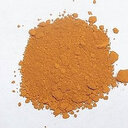DPPH, ABTS free radical scavenging, antibacterial and phytochemical evaluation of crude methanolic extract and subsequent fractions of Chenopodium botrys aerial parts.
Sleutelwoorden
Abstract
We investigated antioxidant, antibacterial potentials and secondary metabolites of Chenopodium botrys aerial parts to rationalize its effectiveness in free radicals induced disorders and infectious diseases. Antioxidant activity of plant extracts were investigated using DPPH and ABTS free radicals scavenging assays. Antibacterial potential was studied using well diffusion method. Phytochemical analysis was performed for the presence of secondary metabolites. In DPPH assay chloroform fraction (CHF), ethyl acetate fraction (EAF) and n-hexane fraction (NHF) were most active causing average inhibition of 65.9, 59.2 and 55.9% at concentration of 1mg/ml with IC50 values of 140, 30 and 590 μgml respectively. EAF, CHF and aqueous fraction (AQF) revealed highest scavenging effect against ABTS free radicals causing 85.46, 82.73 and 68.80% inhibition with of IC50 of 75, 94 and 530 μg/ml respectively. In antibacterial assay, CHF was found most effective against S. aureus presenting an inhibitory zone of 19 mm whereas; EAF, CHF and NHF were most active against K. pneumoneae with inhibitory zones of 27.1 mm, 25.4 and 18.7 mm respectively. C. botrys was tested positive for flavonoids, anthraquinones, saponins and tannins. Current findings revealed that that C. botrys is rich source of natural antioxidant and antibacterial bioactive compounds and may be further investigated.


